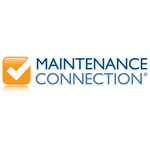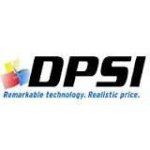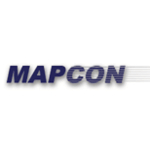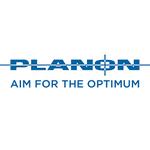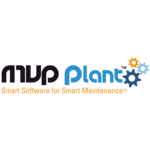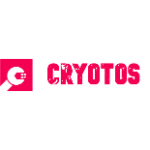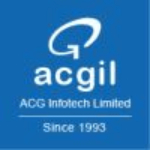Maintenance Connection is a leading software that simplifies maintenance management for businesses of all sizes. It streamlines maintenance processes, improves asset reliability, and increases productivity. With its user-friendly interface and powerf...Read Maintenance Connection Reviews
TechnologyCounter provides genuine, unbiased real user reviews to help buyers make informed decisions. We may earn a referral fee when you purchase through our links, at no extra cost to you.
List of 15 Best Plant Maintenance Software
Showing 1 - 15 of 28 productsFiix is a leading software solution that is transforming the way maintenance and asset management is done. With its user-friendly interface features, Fiix makes it easier for businesses of all sizes to manage their assets and maximize their productiv...Read Fiix Reviews
Hippo CMMS - your all-in-one solution for streamlining maintenance operations. From tracking assets and work orders to scheduling and reporting, Hippo CMMS simplifies and organizes your maintenance processes. Say goodbye to chaos and hello to efficie...Read Hippo CMMS Reviews
DPSIis a ultimate software solution for your business needs. With its advanced features and user-friendly interface, DPSI streamlines operations, enhances efficiency, and improves productivity. Say goodbye to traditional methods and say hello to the...Read DPSI Reviews
MAPCON is a solution for all your maintenance needs. With advanced features and user-friendly interface, it simplifies maintenance processes and helps streamline operations. Trusted by numerous businesses, MAPCON is the go-to software for efficient a...Read MAPCON Reviews
Planon is a leading software company that specializes in creating solutions for managing real estate, facilities, and workplace processes. With a proven track record of providing efficient and innovative solutions, Planon is dedicated to helping busi...Read Planon Reviews
MVP One CMMS is a solution for all your maintenance and asset management needs. With its user-friendly interface and robust features, MVP One CMMS streamlines processes and increases efficiency. Empower your team and take control of your facilities w...Read MVP One CMMS Reviews
MPulse - your all-in-one solution for efficient and streamlined maintenance management. With user-friendly features and customizable options, MPulse allows you to effortlessly track, schedule, and report all aspects of your maintenance operations. Si...Read MPulse Reviews
Cryotos CMMS is a top-of-the-line software designed to streamline maintenance operations for businesses of all sizes. With its user-friendly interface features, Cryotos CMMS is revolutionizing the way companies manage their maintenance tasks. From tr...Read Cryotos CMMS Reviews
ACGIL Plant Maintenance is a solution for streamlining all plant maintenance processes. Designed with advanced technology and user-friendly interface, it empowers businesses to efficiently manage their machinery and equipment. With ACGIL Plant Mainte...Read ACGIL Plant Maintenance Reviews
The PROMAINT EAM CMMS is a software designed to streamline and optimize maintenance and asset management processes for businesses of all sizes. With its user-friendly interface functionality, PROMAINT EAM CMMS is the perfect solution for organization...Read PROMAINT EAM CMMS Reviews
EZOfficeInventory is a complete solution to efficiently manage your organizations assets. With its user-friendly interface and powerful features, EZOfficeInventory simplifies inventory tracking and streamlines asset management processes. Say goodbye...Read EZOfficeInventory Reviews
Asset Infinity is a solution for managing your organizations assets effortlessly. Designed to streamline asset tracking and maintenance processes, Asset Infinity offers a user-friendly interface and powerful features for maximum efficiency. Say goodb...Read Asset Infinity Reviews
Enterprise Gateway is a software solution designed to enhance and streamline communication and collaboration within your organization. With its advanced features and seamless integration, the Enterprise Gateway is the ideal platform for businesses of...Read Enterprise Gateway Reviews
Ramco EAM on Cloud provides advanced and all-inclusive cloud-based Asset Management software, which is seamlessly integrated with financials and HCM, creating a unified platform. Ramco EAM software is futuristic and caters to modern needs...Read Ramco EAM Reviews
- What Is Plant Maintenance Software?
- Top Reasons Why Businesses Need Plant Maintenance Software?
- What Are the Top Key Features of Plant Maintenance Software?
- What Are the Top Benefits of Plant Maintenance Software?
- What Are the Steps to Choose the Right Plant Maintenance Software?
- What Are the Types of Plant Maintenance Software for Different Industries?
- What Are the Technology Trends for Best Plant Maintenance Software?
- What Are the Deployment Options for Plant Maintenance Software?
What Is Plant Maintenance Software?
Plant maintenance software refers to a computer-based application utilized for the purpose of effectively managing and overseeing the maintenance operations of a facility. Companies that oversee extensive industrial facilities, such as factories, power plants, and process plants, often benefit from the use of maintenance work scheduling and tracking systems.
In general, the plant maintenance management software encompasses a variety of functionalities and capabilities, including the scheduling of maintenance tasks, the administration of maintenance costs, the tracking of assets, and the maintenance of preventive maintenance logs.
The program facilitates the organization and monitoring of maintenance activities, encompassing tasks such as scheduling, service management, personnel allocation, and parts inventory management.
Additionally, the plant maintenance system has the capability to provide comprehensive data regarding the repair history of individual equipment units, including maintenance expenses over a period of time as well as trends in their condition.
Moreover, the plant maintenance management system has the capability to issue notifications for planned maintenance activities and can suggest optimal timing for preventive maintenance scheduling.
Plant maintenance system has been specifically developed to enhance the overall efficiency of plant maintenance procedures, enabling maintenance teams to promptly execute, document, and monitor all operational tasks.
Top Reasons Why Businesses Need Plant Maintenance Software?
1. The utilization of plant maintenance software has the potential to enhance plant efficiency through the monitoring and optimization of process flows.
2. The best plant maintenance software has the potential to effectively mitigate maintenance expenses through its ability to offer a structured approach in determining the optimal timing for servicing requirements and identifying instances when it may be deferred.
3. Automated processes have the potential to enhance operational efficiency by reducing the necessity for manual oversight in the management of routine preventative maintenance tasks and schedules.
4. The inclusion of scheduling skills allows personnel to effectively strategize and prepare for the most efficient utilization of assets.
5. Automated maintenance chores have the potential to yield a reduction in manual errors, hence contributing to enhanced accuracy and a decrease in product problems.
6. Efficiently record work orders pertaining to maintenance chores in order to guarantee timely and appropriate repair and response durations.
7. One can efficiently record work orders for scheduled maintenance in order to maximize the utilization of resources.
8. Plant maintenance management software has the potential to mitigate downtime through the provision of a centralized data repository that can be readily accessible by both maintenance personnel and management.
9. Automated reports offer more transparency on completed tasks and utilized resources, hence facilitating more effective asset planning.
10. Automated alerts and notifications can be employed as a means to guarantee timely completion of maintenance tasks and to promptly notify management in cases where urgent repair is imperative.
11. Historical data possesses the capability to be utilized for the purpose of monitoring and evaluating maintenance patterns, thereby guaranteeing the attainment of optimal performance over the whole lifespan of the plant.
12. Automated workflows have the capability to guarantee the completion of maintenance chores in the utmost safe and efficient manner.
13. The best plant maintenance software has the capability to enhance the level of insight on safety events and the overall health status of assets.
14. The availability of real-time data facilitates expedited decision-making and response times.
15. The incorporation of machine learning and artificial intelligence (AI) driven predictive analytics has the potential to decrease maintenance expenses and enhance operational effectiveness.
What Are the Top Key Features of Plant Maintenance Software?
The top key features of plant maintenance software include:
1. Asset Management: The software aids in the effective management of all assets and equipment within the plant through the provision of maintenance management, scheduling of preventive maintenance activities, and asset scheduling.
2. Work Order Management: The system facilitates the efficient monitoring and administration of work orders within the industrial facility, encompassing the oversight of budgetary constraints and the assessment of costs associated with various operations.
3. Inventory Management: The utilization of inventory and materials tracking systems facilitates the effective monitoring and control of resources necessary for plant repairs and maintenance.
4. Documentation: The storage and updating of paperwork pertaining to plant maintenance, encompassing safety rules, inspection reports, and parts and services manuals, serves as a beneficial practice.
5. Scheduling and Planning: Plant maintenance management system software facilitates the organization and coordination of maintenance tasks, aiding in the prioritization, scheduling, and allocation of essential resources.
6. Automated Maintenance Monitoring: The system monitors and records preventative maintenance and repair tasks in real-time, guaranteeing the timely completion of all maintenance activities.
7. Mobility: The mobile access functionality facilitates users in accessing the maintenance system using their smartphones or tablets, hence allowing them to utilize all the available functionalities.
8. Reporting: The utilization of plant maintenance management software technology facilitates the generation and retrieval of comprehensive reports pertaining to the operation of plants, along with the ability to access maintenance histories and records.
What Are the Top Benefits of Plant Maintenance Software?
1. Increased Efficiency: The utilization of plant maintenance software has the potential to enhance operational efficiency through the automation of routine maintenance procedures, hence facilitating optimal operational time for equipment and systems.
2. Cost Savings: Regular maintenance has the potential to yield financial benefits by optimizing the operational efficiency of equipment and systems, thereby minimizing both the occurrence of downtime and the expenses associated with repairs.
3. Improved Safety: The enhancement of safety can be achieved by the use of automated routine maintenance procedures, thereby mitigating the potential hazards connected with manual activities.
4. Increased Production Output: The utilization of plant maintenance system can enhance production efficiency by guaranteeing the optimal functioning of equipment and systems.
5. Reduced Paperwork: The utilization of plant maintenance software has the potential to mitigate the reliance on physical paperwork through the automation of paperwork procedures, hence enabling the electronic execution of data entry and record keeping tasks.
6. Scalability: Numerous plant maintenance system offers the capability to incorporate supplementary capabilities as required, so enabling firms to expand their operations in accordance with their evolving demands.
7. Improved Visibility: The best plant maintenance software has the capability to enhance the level of insight into the functioning of a system, hence enabling managers to make more informed decisions pertaining to maintenance and repairs.
8. Lower Risk: The use of automated routine maintenance operations has the potential to significantly mitigate the occurrence of human mistake, leading to a reduction in both equipment breakdowns and the associated expenses incurred from repairs.
What Are the Steps to Choose the Right Plant Maintenance Software?
1. Evaluate Your Needs: Firstly, it is imperative to carefully assess your individual requirements and identify the exact areas in which the implementation of plant maintenance software might yield the greatest advantages.
Please evaluate if there are any specific requirements pertaining to industry or safety laws that need to be taken into consideration.
2. Research the Market: Conduct an investigation of the present market landscape pertaining to software solutions designed for the maintenance of plants.
This inquiry seeks to ascertain the primary service providers within a certain domain, and afterwards evaluate and contrast the various attributes and expenses associated with each.
3. Create a Shortlist: Based on the findings of the research conducted, a concise compilation of 3-5 alternative solutions that demonstrate suitability can be identified.
4. Speak to Existing Clients: Initiate communication with current clientele to inquire about their encounters with the software. Gain insight into the ways in which the plant maintenance management system has facilitated their operations and the challenges they have experienced in the process.
5. Request a Demo: Kindly solicit a demonstration or trial of the best plant maintenance software from the suppliers included in your list of potential options. Conduct a software evaluation and evaluate its alignment with your requirements.
6. Make a Decision: After doing a thorough analysis of the feature comparison, evaluating the demo results, and considering customer experiences, plant maintenance management system is recommended to choose the software solution that best aligns with the requirements. Subsequently, the decision to proceed with the purchase can be made.
What Are the Types of Plant Maintenance Software for Different Industries?
A diverse range of plant maintenance software solutions is accessible to various businesses.
There exist three distinct categories of plant maintenance software that are frequently employed in practice:
1. Predictive Maintenance Software: The utilization of predictive maintenance software involves the analysis of data from various sources to properly forecast prospective equipment failures. This is achieved by the examination of patterns, prediction of equipment lifecycles, and the implementation of early warning systems to detect potential breakdowns.
This particular program is frequently employed within the heavy industrial domain, encompassing sectors like as manufacturing, oil & gas, and mining.
2. Condition-Based Maintenance Software: This software category gathers data from monitoring sensors and alarms to identify equipment faults and optimize factory operations. The utilization of this technology is prevalent in various sectors, including healthcare, energy, and aerospace, among other industries.
3. Preventative Maintenance Software: This particular program is designed to prioritize the prevention of future equipment failures by effectively organizing maintenance chores and efficiently allocating workers for proactive measures in advance.
This particular technology finds common application in the automotive and transportation sector, as well as the power business.
In general, a wide range of plant maintenance software solutions are accessible across many industries. As technological advancements progress, plant maintenance management software is anticipated that increasingly advanced solutions will be devised to enhance the ease and efficiency of plant maintenance.
What Are the Technology Trends for Best Plant Maintenance Software?
The technology advances pertaining to optimal plant maintenance software exhibit variability contingent upon the specific industry. In a broad sense, it is worth noting that certain technology trends are widely observed.
1)Data Analysis – The utilization of data analysis and predictive analytics in plant maintenance software has facilitated enhanced identification of prospective issues, accurate prediction of future requirements, and optimization of cost management for enterprises.
2) Artificial Intelligence / Machine Learning (AI/ML) – In contemporary times, software has the capability to integrate artificial intelligence and machine learning methodologies, hence enabling the automation of mundane jobs and offering prognostications for maintenance requirements.
3) Automation/Robotics – The utilization of plant maintenance software enables the automation of several processes encompassing HVAC system, lighting, and other subsystems. Additionally, it has the potential to facilitate the utilization of robotics in many jobs, including inventory checks and cycle times.
4) Internet of Things (IoT) – The Internet of Things (IoT) facilitates the connection between the software and the many systems and components of the plant. This connection allows for the collection and analysis of data, as well as the real-time sharing of information among stakeholders.
5) Cloud Computing – Cloud computing has the potential to be utilized for certain components of software, such as data storage or the execution of particular computations.
What Are the Deployment Options for Plant Maintenance Software?
The available deployment options for Plant Maintenance Software are contingent upon the specific system that is selected. In general, systems can be classified into three distinct categories: Software as a Service (SaaS), cloud-based, or on-premise.
1. Software-as-a-Service (SaaS) systems operate only through online platforms, enabling users to access them from any computer or mobile device that is connected to the internet.
2. Cloud-based systems, similar to internet-based systems, rely on the utilization of on-site infrastructure, such as servers or storage, for the purpose of storing both software and data.
3. On-premise systems are exclusively housed within the physical premises of a business, necessitating the acquisition and administration of all hardware, software, and data by the organization.
Regardless of the chosen deployment choice, it is imperative to ensure that the system has the requisite features and capabilities to effectively fulfill the goals and expectations of the organization.
